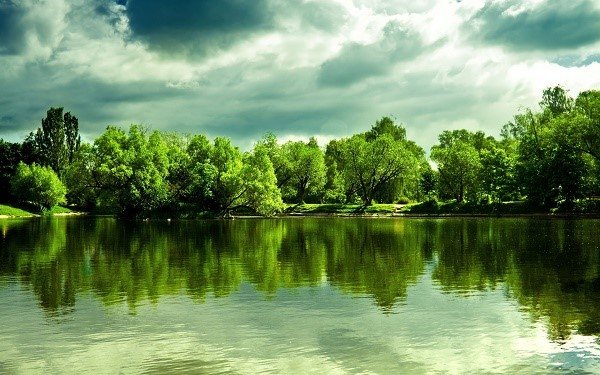The Water Code states:
Every citizen has the right to have access to public water bodies and use them free of charge for personal and domestic needs, unless otherwise provided by this Code and other federal laws.
— Article 6, paragraph 2 of the Water Code of the Russian Federation
Now let’s figure out what applies to public water bodies and what kind of “other” this is provided for in the laws.
Public water bodies
Surface water bodies that are in state or municipal ownership are water bodies of public use, unless otherwise provided by this Code.
— Article 6, paragraph 1 of the Water Code of the Russian Federation
Surface water bodies include: seas, rivers, streams, lakes, swamps, ponds, quarries, reservoirs, springs, etc.
Possible restrictions
- Access to water bodies may be limited if these water bodies serve to ensure the defense of the country, state security and other needs.
These restrictions are introduced by separate legislative acts and their effect applies to all citizens. Information about the restrictions introduced is carried out through local media and with the help of special signs near water bodies.
- Only two types of water bodies can be privately owned - ponds and irrigated quarries. The owner of the land where these water bodies are located has the right to restrict access to them.
Let’s summarize in a small table “Access to water bodies”
| Free | May be limited |
| All bodies of water in federal or municipal ownership of the sea (including bays, straits, bays and other parts thereof), rivers, streams, lakes, swamps, ponds, quarries, reservoirs, springs, etc. | Water bodies serving to ensure the defense of the country, state security and other needs. |
| Ponds and irrigated quarries are the only bodies of water that can be privately owned. The owner of the land plot within which these water bodies are located has the right to restrict access to them. |
The state can transfer water bodies for use to enterprises and citizens on the basis of a decision or water use agreement. However, the free passage of citizens to water bodies should not be impaired.
Access to ponds and quarries
The most questions arise with access to ponds and flooded quarries. These objects may be privately owned (more precisely, the land on which the reservoir is located) and access to them may be limited. How to check if restricting access to a pond is legal?
On the public registry map you can find data on the object of interest to us.
If the border of a pond or a flooded quarry is confined to a site that is the private property of a private or legal entity, then the owner of the site can set his own rules.
If the shoreline extends beyond the boundaries of the site or is simultaneously the shoreline of another body of water (the pond is flowing), then such a body of water cannot be privatized, it is federal property and all citizens must be able to use it.
It is also important to know that taking over a pond in a gardening partnership, even if it is located on their public lands, is also illegal. Below in the article there is a link to instructions on how to combat squatting.
Another important concept that you need to know in order to better understand and defend your rights is the coastal strip.
Water fund
The water fund is a collection of water bodies within the territory of the Russian Federation[*].
Russia is distinguished by an abundance of natural waters, a well-developed river network and a system of lakes. In total, 72.2 million hectares are occupied under water (without swamps), of which 27.4 million hectares (38.0%) are included in the lands of the water fund, the remaining lands under water are distributed among other categories. A significant share of them falls on the forest fund, agricultural lands and reserve lands. The total volume of static water resources in Russia is estimated at approximately 88.9 thousand km3 of fresh water, of which a significant part is concentrated in groundwater, lakes and glaciers. The average long-term renewable water resources are estimated at 4258.6 km3/year, the bulk of which is formed on the territory of the country and only about 200 km3/year is formed on the territory of neighboring states[*].
The territory of Russia is washed by the waters of 12 seas of the Atlantic, Arctic and Pacific oceans, as well as the inland Caspian Sea. The total length of the coastline of the Russian seas is more than 60 thousand km, the total area of the sea area falling under the jurisdiction of the Russian Federation is about 8.6 million km2, of which about 3.9 million km2 is on the shelf and 4.7 million km2 on the deep sea areas.
rivers in Russia . Most rivers carry their waters to the Arctic (64%) and Pacific oceans (27%), while the Caspian, Baltic and Azov-Black Sea basins account for 7%, 2% and 1% of rivers, respectively. Of the 142.3 thousand watercourses included in the State Water Register, the share of large rivers with a length of more than 500 km is only 0.008%, the share of rivers with a length from 101 to 500 km is 0.1%. Small rivers and streams are the main element of the riverbed network of drainage areas; up to 44% of the Russian population and almost 90% of the rural population live in their basins. The share of static water resources of Russian rivers is more than 20% of the world level.
lakes in Russia, their total water surface area is almost 409 thousand km2, and the share of static water resources in Russian lakes is about 30% of the world level of lake waters. 20.7 thousand lakes are registered in the State Water Register. 98% of the lakes are small (less than 1 km2) and shallow (depth 1–1.5 m), 19 lakes (7 of them in the European part of Russia) have a mirror area exceeding 1 thousand km2.
Swamps , which play an important role in the formation of the hydrological regime of rivers, occupy about 8.6% of the territory of Russia. The areas of swamps range from several hectares to tens of square kilometers; they contain about 3000 km3 of static reserves of natural waters. Swamps are distributed unevenly across the territory and swampiness is characterized by significant fluctuations; in a number of regions, such as the Murmansk region and the Khanty-Mansiysk Autonomous Okrug, swamps occupy more than a third of the territory (39.3% and 37.3%, respectively). The largest number of swamps is concentrated in the northwestern regions of the European part of Russia and in the central regions of the West Siberian Plain.
Large reserves of fresh water in Russia are concentrated in glaciers . In more than 8 thousand with an area of over 59.5 thousand km2, about 15 thousand km2 of water reserves are concentrated, and taking into account underground ice and permafrost - about 40 thousand km2. On the territory of Russia, glaciers are common in almost all climatic zones. Water reserves in permafrost and underground ice exceed 5% of the world's volume, and in Russian glaciers - only 0.1% of the world's level.
Groundwater is one of the sources of water supply and the most important mineral resource. Fresh groundwater is the basis of Russia's water fund and serves mainly for drinking purposes. More than 16 thousand groundwater deposits (areas) have been explored in Russia, of which about 11 thousand are in operation. The total amount of estimated groundwater reserves suitable for domestic and drinking, industrial and agricultural water supply, land irrigation and pasture watering is more than 82 million m3/day. The predicted groundwater resources are estimated at almost 317 km3/year.
Coastal strip
The strip of land along the border of the reservoir is also a public property; it is intended for movement and stay near the reservoir.
The width of the shoreline is precisely indicated in the Water Code:
- For rivers with a length from source to mouth of more than 10 km - 20 m.
- For smaller rivers, canals and streams less than 10 km long - 5 m.

In these territories, construction, fences and any other structures that impede the passage of citizens are prohibited.
The use of mechanical vehicles is also prohibited on the coastline. Those. You can’t drive a car to the shore, but you can walk on foot!
What does the law say about the use of common water bodies?
Article 6 of the Water Code establishes that any surface water bodies that are in state or municipal ownership are water bodies of public use, that is, publicly accessible water bodies. A 20-meter wide coastal strip is also allocated for public use. Every citizen has the right to have access to public water bodies and use them free of charge for personal and domestic needs, unless otherwise provided by the same Code and other federal laws (Part 2). The use of public water bodies is carried out in accordance with the rules for the protection of human life on water bodies, approved in the manner determined by the authorized federal executive body, as well as based on the rules established by local governments for the use of water bodies for personal and domestic needs (Part 3).
Every citizen has the right to use (without the use of mechanical vehicles) the shoreline of public water bodies for movement and stay near them, including for recreational and sport fishing and mooring of floating craft. “Free access” implies not only the possibility of access to the shore, but also the ability of citizens to use the entire coastline free of charge and without restrictions
. ! Attention: we are not talking about swimming, which may be prohibited for sanitary reasons or due to lack of necessary equipment.
In public water bodies, swimming is only possible in strictly designated and properly equipped areas. The establishment of the territory in which swimming is permitted and the determination of places where swimming is prohibited, limited or suspended is determined by the decision of regional authorities and local self-government.
Exception to the general rule for using a water body
The only exceptions to the general rule of open access to the shore are cases of establishing a separate water use regime, when, on the basis of Part 2 of Art. 38 of the Water Code of the Russian Federation, water bodies or parts thereof are provided to ensure the defense of the country and the security of the state, other state or municipal needs, the provision of which excludes the use of water bodies or their parts by other individuals, legal entities, as well as for aquaculture (fish farming).
What do we have after exercising our right to use a common water body?
You arrive at a river, lake or other body of water and see along the shoreline a fence and a barrier blocking the passage. At the same time, you know for sure that this shore should be “open access”. The coastal zone where you planned your vacation is not a specially protected or reserved area, where access is in principle prohibited.
But you are faced with the choice of paying or looking for another place where access to the water element will be free. At the same time, you can, of course, ask for documents from the guards and the tribute collector, on the basis of which you are deprived of the right to free use of the publicly accessible coastal zone, but everyone already knows the answer to such requests.
Each boarding house or tourist center with access to a water body equips its own beach, and limits access to it, setting a price for use. The beaches of sanatoriums also cannot be paid. The same rules apply; land for a sanatorium is issued only up to the coastal strip of 20 meters. But in fact, many sanatoriums close access to the beaches adjacent to their territory and make them free only for their vacationers.
Now anyone can declare their right to use “no man’s” land, and no one checks the legality of these actions as long as they do not violate the rights of other persons. The regulatory authorities represented by Rosprirodnadzor respond to complaints, and if there is no “signal”, then there is no counteraction to the invaders of coastal territories adjacent to water bodies.
If the coastline is owned
In practice, there are cases when the property owns land with a coastal strip. This is a legacy of the USSR, when plots with borders up to the water's edge were provided and the owners managed to privatize them before the new code came into force. Since 2006, a ban has been introduced on the privatization of land plots within the coastal strip.
But property rights do not give the right to restrict access to a reservoir. A public easement applies to areas of coastal strips that are registered as property. The owner of the land cannot prevent citizens from accessing a public water body.
What is an agreement on the temporary transfer of ownership of a water body?
An agreement concluded for the further use of water areas, from the point of view of civil law, is very similar to a transaction that is applicable in cases related to the lease of plots of land.

The Russian Federation has the right of ownership in relation to all water areas of the country. Only with the permission of the state can this right be transferred to another person
Of course, land is a different legal substance, and it can belong both to the state and to individuals, legal entities and other persons. Therefore, it should be expected that there should be special rules for water bodies transferred for use, different from the list of rules relevant for land plots.
Indeed, there is such a nuance. Thus, if a person receives the use of a water area in accordance with an agreement concluded with a country, then he is obliged, at the same time, to provide free access to these objects. Simply put, you do not have the right to prohibit someone from moving along a specific section of a river, for example, even if you have previously received permission to rent it.

If you have temporarily acquired the status of owner of a body of water, you do not have the right to prevent further movement on it only on the basis of the fact that you own this property
Legal regime of water protection zones
In order to protect water bodies from degradation, water and land legislation provides for the establishment of water protection zones with a regime of restrictions on economic and other activities. Water protection zones are established only for surface water bodies. Their sizes and boundaries are approved by the executive authorities of the constituent entities of the Russian Federation on the proposal of the territorial bodies of the Ministry of Natural Resources of Russia.
Water protection zone is an area adjacent to the water areas of surface reservoirs and watercourses, the width of which is determined depending on the length of watercourses or the area of water bodies. The maximum width of water protection zones is 500 m from the water's edge. Structurally, the water protection zone includes a coastal protective strip, a part of the water protection zone directly adjacent to the reservoir. Its width ranges from 15 to 100 m. The dimensions and boundaries of water protection zones on the territory of settlements are established based on the specific conditions of planning and development in accordance with the approved master plans. The border of coastal protective strips can be combined with the embankment parapet.
Lands of water protection zones can belong to various categories of land - agricultural, forestry, etc., forming water fund lands only within the coastal protective strip or lands occupied by hydraulic engineering or water management structures. At the same time, regardless of this, regulation of land use within all water protection zones is carried out on an integrated basis, based on the interests of protecting water bodies.
Water protection zones are established on the basis of projects for each specific water body based on its intended purpose, condition and other indicators and are indicated on the ground with special signs.
Water protection zone projects include the necessary cartographic materials and contain recommendations on land use.
The most stringent land use regime is established for the coastal protective strip, where plowing of land, the use of fertilizers, grazing of livestock, the placement of summer cottages and garden plots and the allocation of plots for individual construction, the movement of cars and tractors, except for special-purpose vehicles, are prohibited. It is allowed to locate water supply, recreational facilities, port and hydraulic structures here. Outside the coastal protective strip in the water protection zone, regardless of the category of land, the placement of fertilizer warehouses, waste storage areas, the use of chemical pest control agents, car washing and repair, and the placement of collective parking for personal and government vehicles are not permitted. The placement of summer cottages and garden plots is permitted, provided that land users comply with the restrictions established in the projects.







